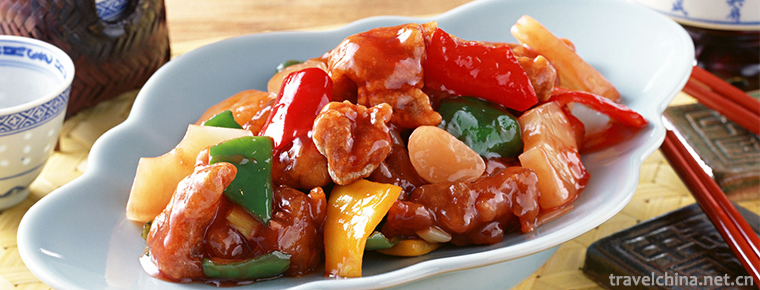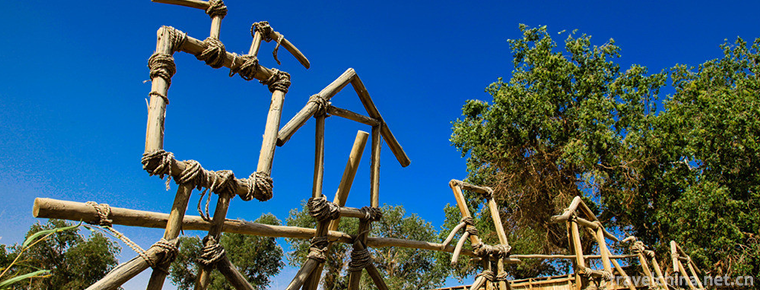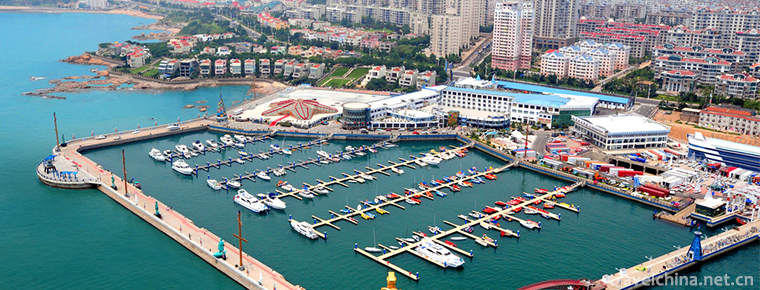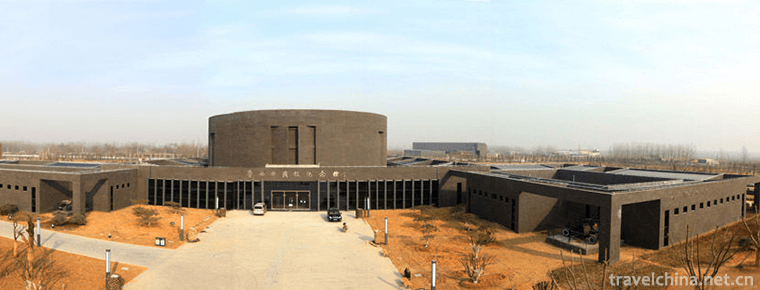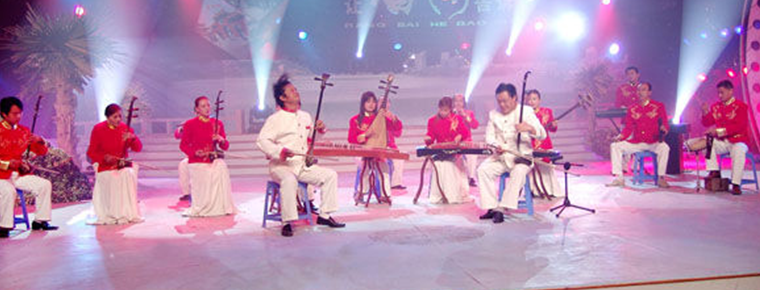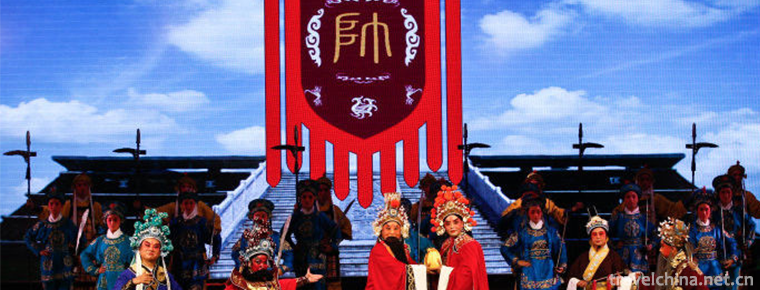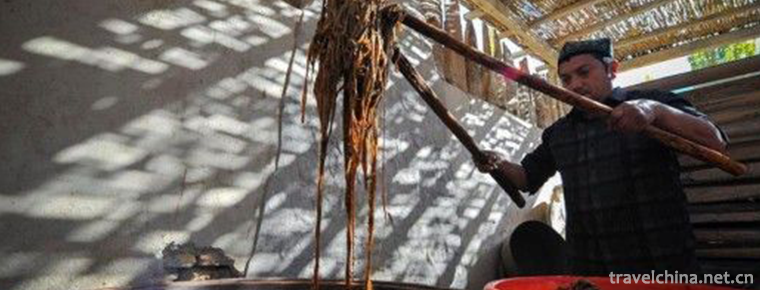Brush making skills
Brush making skills
Brush making skills, local folk traditional skills in Huangpu District of Shanghai and Jiangdu District of Yangzhou City of Jiangsu Province, one of the national intangible cultural heritage.
Brush making technique is a traditional handmade technique with a long history in China. It is made of animal hair tied into a pen head and then bonded to a tubular pen pole. Zhou Huchen's brush making skill is a combination of Hu Pen, Water Pen and Calligraphy and Painting Brush. It integrates the brush making skills of South China and creates Shanghai style brushes, which make Shanghai style brushes accompany with Shanghai style calligraphy and painting. Yangzhou brush making technology is unique with its numbness as a foil. It has been well-known for more than 400 years. Its production technology is mainly retained in Jiangdu Traditional Chinese Painting Brush Factory, located in Huadang, Jiangsu Province.
In 2009, the craftsmanship of brush making was approved by the State Council of the People's Republic of China and listed in the second batch of national intangible cultural heritage list, project number_-200.
Zhou Huchen's Brush
Zhou Huchen's brush making skills are named after the founder Zhou Huchen and accumulated by Zhou Huchen's Brush and Ink Zhuang (Pen Factory) in more than 300 years.
In 1694, descendants of Zhou Huchen set up Zhou Huchen Bimozhuang from Jiangxi to Suzhou.
After the opening of Shanghai, Zhou Huchen Bimozhuang moved from Suzhou to Huangpu District in 1862.
In 1958, it amalgamated ten pen and ink banks in Shanghai and established old Zhou Huchen pen and ink banks.
In 1987, the company expanded its scale and established Shanghai Lao Zhou Huchen Pen Factory.
Yangzhou brush
Yangzhou brush (also known as "Yangzhou fountain pen") is unique with its numbness as a backing. History of the Qing Dynasty records: "Yangzhou Zhongguan Rat Heart Painting Brushes are excellent for brushing and painting, and the fountain brushes are also wonderful."
In 1747, Ren Wenyuan's family pen-making workshop was founded by Ren's family. Up to now, a seal of "Bridge Ren Wenyuan Bookstore" in Zhendian is still treasured. Before the 1950s, Yangzhou fountain pens were distributed in Huadang, Daqiao, Zhengyi, Zhanggang, Wuqiao and Yangzhou City, and their products were sold all over the country and even overseas. Contemporary, Jiangdu Traditional Chinese Painting Brush Factory keeps complete production skills, adheres to the production of Yangzhou fountain brushes, and has become an important export base of brushes.
Process characteristics
Zhou Huchen's Brush
Zhou Huchen integrates the skills of many families in making brushes, and integrates the strengths of each family. On the basis of inheriting the traditional skills, he constantly innovates the skills of making brushes, from making wolf pens to making lamb pens and both of them to making wolf pens. Combining with the characteristics of Shanghai style calligraphers and painters, he creates the techniques of making brushes such as "waist-strengthening method", "top-up method", "top-up method", "refinement method" and animal hair.“ Configuration method"improves the use of brush function.
Yangzhou brush
Yangzhou brush production technology is unique, natural materials, complex technology, all by hand, tongue and visual production.
Yangzhou brush, with water into the set, watertight, durable; pen strokes, complement each other; elegant character, strong charm. The representative work "Xiangjiang Yipin" has been praised as "the king of the pen".
Technological process
Yangzhou brushes are made of wolf hairs and rabbit tips (hair on rabbit's back) as main raw materials and porous hemp as auxiliary materials. The materials used in pen making are bamboo, Nanmu, Haimei, Niujiao, jade, ivory, porcelain carving paint, cloisonne, etc. The auxiliary materials are rosin, rice clay, alum, sulfur, silk thread, top stone, lead paint, pen repairing glue, etc. Its production can be roughly divided into three parts: water basin, suit and dry farming, including material selection, tearing, combing, picking, top hairs, uniform hairs, pressing hairs, brushing hairs, whole hairs, linen-making, lining, lining, round pen, capping hairs, brush-setting, flat head, winch, pen-setting, pen-repairing, engraving and more than 120 working procedures.
Inheritance and protection
Inheritance value
"Zhou Huchen" combines the skills of Lake brush, fountain brush and calligraphy and painting brush, integrates the skills of southern China, and creates Shanghai style brush, which is accompanied by Shanghai style brush and calligraphy and painting.
The craftsmanship of Yangzhou brush has extremely important historical and cultural value and technological value.
Inheritance status
For thousands of years, the craftsmanship of Yangzhou brush production has been following the way of inheritance of the family, teachers and apprentices, and the inheritance context is clear. There are Ren's family inheritance pedigree and teacher-apprentice inheritance pedigree. There are 130 original pen-making workers in Jiangdu Traditional Chinese Painting Brush Factory, but now there are only twenty or thirty. The inheritance of skills has become a problem, and no real inheritor has yet been found. In the past, brush making skills were taught within the family, but not outside. Later, this rule was broken.
At present, the brush market is shrinking day by day. Making brushes is all manual work, complicated and hard work, low social status and poor wages. Young people are not interested in learning crafts. Over time, the brush making industry has been scarce and is on the verge of crisis.
Inheriting characters
Wu Qingchun, male, born in 1961. In 2012, Wu Qingchun was selected as the representative successor of the fourth batch of national intangible cultural heritage projects and declared in Huangpu District, Shanghai. Declaration items: brush making skills.
Shi Qingpeng, male, born in 1948. In 2012, Shi Qingpeng was selected as the representative successor of the fourth batch of national intangible cultural heritage projects, Jiangdu City of Jiangsu Province declared. Declaration items: brush making skills.
protective measures
In 2013, Jiangdu Traditional Chinese Painting Brush Factory, as the only one to preserve the complete production skills of Yangzhou brushes, received special funds from the Ministry of Culture for non-heritage protection. After consulting a large number of literary and historical materials and field research, Shi Qingpeng, the representative inheritor of the national intangible cultural heritage project, and experts combed the production skills of Yangzhou brush.
Jiangdu Traditional Chinese Painting Brush Factory investigates and studies the historical origin, inheritance context, technical characteristics, related objects and appliances of Yangzhou brush, establishes Yangzhou Brush Production Technology Committee, establishes Yangzhou Brush Production Technology Training Institute and Master's Studio, regularly teaches primary school students the skills of Yangzhou brush production, and compiles and publishes the monograph "Beauty is immortal in the world: Yangzhou Brush"; Shi Qingpeng's Six Lectures on the Art of Pen Making and the Popular Readings of Brushes and Painting and Calligraphy.
At the end of 2008, the Shanghai Brush and Ink Museum was established. It has become the exhibition center of Zhou Huchen's brush making skills and Cao Sugong's ink ingot making skills. It is also the "national demonstration base for the productive protection of intangible cultural heritage".
social influence
Domestic influence
Honorary commendation
Zhou Huchen's brush once produced "Shoubi" for Emperor Kangxi of the Qing Dynasty, "imperial brush" for Emperor Qianlong, custom brush for calligraphers and painters, and "Dragon-Phoenix Painting" for the Beijing Olympic Games.
Jiangsu Jiangdu Traditional Chinese Painting Brush Factory's "Longchuan" brand brush has won national gold medals and international gold medals for many times, and is known as the "treasure of the country".
Zhou Huchen's "Dragon and Phoenix Painting" was inscribed by Wu Qingchun, a licensed commodity for the 2008 Beijing Olympic Games. His works have been collected in the National Museum of Tibet.
Important exhibition
On November 5, 2018, Zhou Huchen's brush making skills appeared at the first China International Import Expo.
Foreign influence
Zhou Huchen's brush products have a wide market and good reputation in Japan, Korea, Southeast Asia and Hong Kong, China and other countries and regions.
Jiangsu Jiangdu Painting Brush Factory has developed into more than 1600 kinds of Chinese painting and calligraphy brushes in five categories, and has become an important production base in Asia.
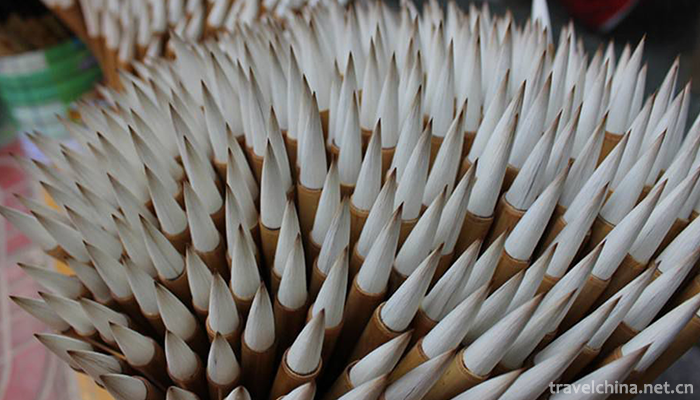
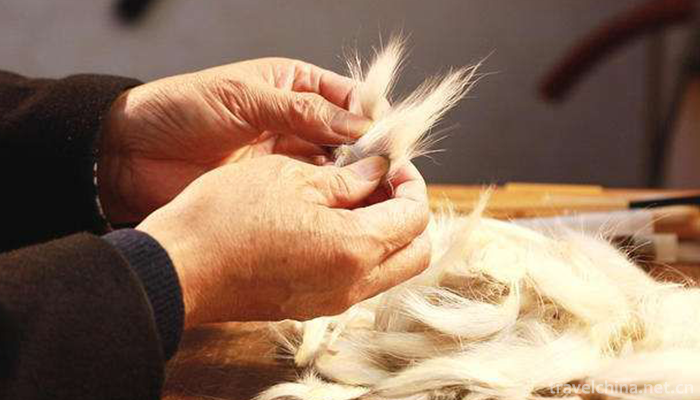
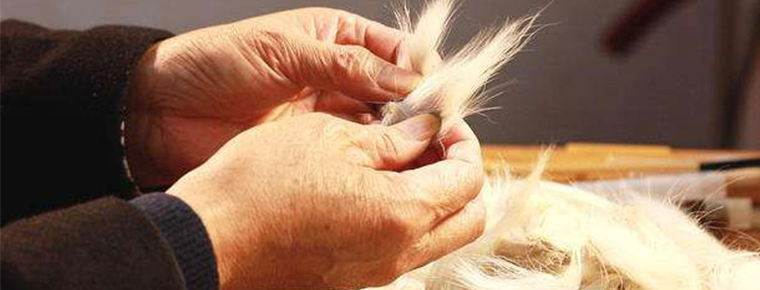
Brush making skills
-
Pineapple Sweet and Sour Pork
Gu Lu meat, also known as the ancient meat. It is a special dish in Guangdong. This dish dates back to the Qing Dynasty. At that time, many foreigners in the city of Guangzhou
Views: 173 Time 2018-11-02 -
Shennong Mountain Scenic Area
Shennong Mountain Scenic Area is a national AAAAA-level tourist area, located in Zhaozhai Village, Ziling Town, Qinyang City, Jiaozuo City, Henan Province, 25 kilometers northwest of the Taihang Mount
Views: 243 Time 2018-12-17 -
Wanfeng Forest Scenic Area
Wanfeng Forest Scenic Area, located in the southeast of Xingyi City, Guizhou Province, is the largest and most typical karst peak forest in China, with its magnificent momentum, peculiar shape and bea
Views: 238 Time 2018-12-17 -
Three Water Lotus World
Foshan Sanshui lotus world is the largest lotus scenic spot in the world with the richest variety resources. It integrates architecture, sculpture, Dutch, mobile games, hotels and catering
Views: 184 Time 2018-12-18 -
Rob Village
Located 35 kilometers southwest of Yuli County, Luobu Village is 85 kilometers south of Korla City. The village covers 72 square kilometers and has more than 20 families
Views: 214 Time 2019-02-06 -
Qingdao Yinhai International Yacht Club
Qingdao Yinhai International Yacht Club is located at No. 30 Donghai Middle Road, Qingdao City. It is the first national AAAA class tourist attraction in China with yacht club as its main body.
Views: 136 Time 2019-02-07 -
Yangshan Ancient Town International Military Tourism Resort
Yangshan Ancient Town International Military Tourism Resort is located in Yangshan Town, Jinxiang County, Southwest Shandong Province. Yangshan Ancient Town International Military Tourist Resort is a
Views: 213 Time 2019-03-02 -
Major tune
The major tune was originally called "drum tune". Varieties of Quyiqu. It was first prevalent in Kaifeng, Henan Province, and then spread to Luoyang, Nanyang and other places.
Views: 376 Time 2019-04-23 -
Han tune
The mast of Hanzhong Diaoqu, a local traditional drama in Hanzhong City, Shaanxi Province, is one of the national intangible cultural heritages.
Views: 194 Time 2019-05-02 -
Uygur Mulberry Paper Making Skills
Uygur mulberry paper takes mulberry branch endothelium as raw material, mulberry branch endothelium is sticky, smooth and delicate, easy to process, after exploitation, soaking, pot boiling, pounding,
Views: 150 Time 2019-06-28 -
Panzhihua in the Sui Dynasty to Yuan Dynasty
At the beginning of Sui Dynasty, Yanzhou was still set up, which was renamed Xining Prefecture and Guazhou Prefecture, and became Yueyi county again. The five counties of Yanzhou established by the Northern Zhou Dynasty were abolished, and the other five counties were subordinate
Views: 148 Time 2020-12-14 -
Nanchong cultural undertakings
By the end of 2019, Nanchong has 10 cultural centers, 242 cultural stations and 10 public libraries. There are 8 museums, 28 cultural relics protection and management institutions, 18 national key cultural relics protection units, 112 provincial-level cultural relics protection units
Views: 309 Time 2020-12-17
